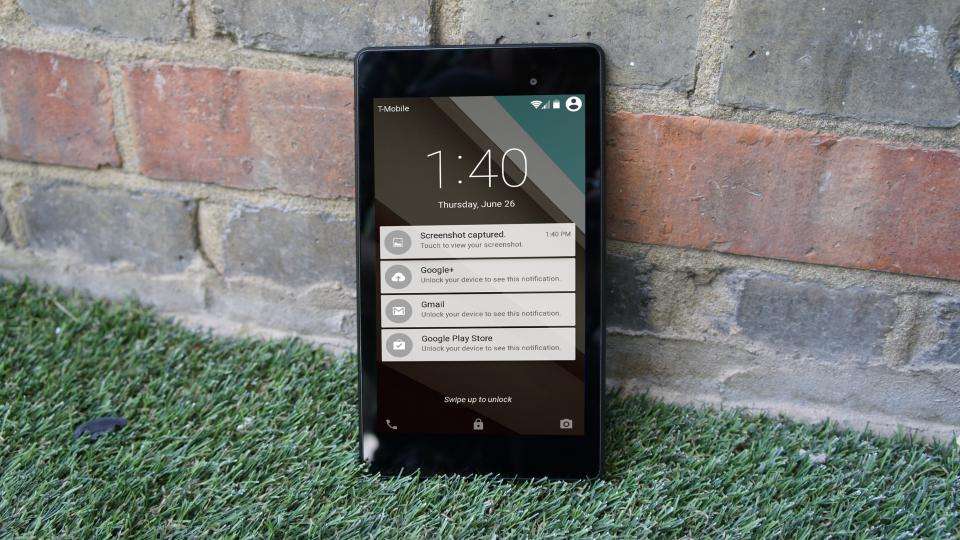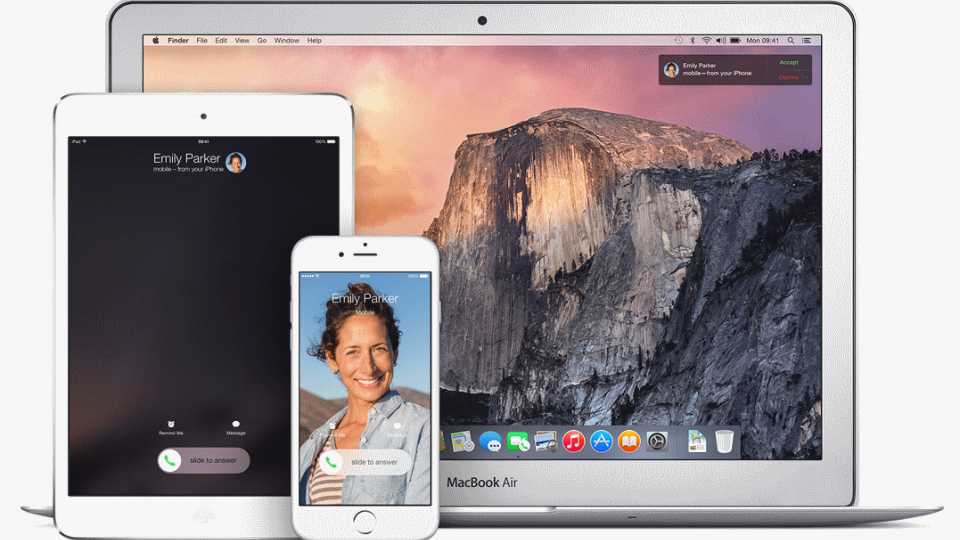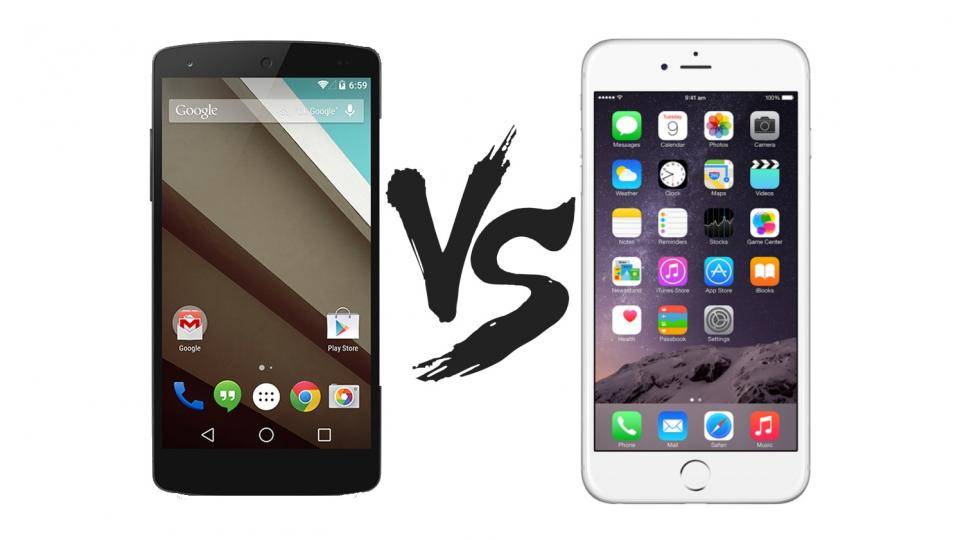The new iPhone 6 and iPhone 6 Plus are here and with them comes iOS 8 , which is also available on older devices dating back to the iPhone 4S and iPad 2. Meanwhile, Google is gearing up to release Android 5.0 Lollipop , the biggest overhaul of its mobile operating system since Android 4.0 (Ice Cream Sandwich) was launched almost three years ago. With iOS 8.1 now being available, and with Android 5.0 about to appear on devices any day, now's a good time to see how the two stack up, and what their differences say about the ambitions of the companies behind them.
Android 5.0 vs iOS 8 design
Android 5.0's new 'Material' design makes everything onscreen look more physical and real, thanks to the shadows cast by every object. As you tap things they give off little rings of colour or shade to show where you've pressed and provide greater feedback. There's also much greater use of transparency with more transparent menus – such as the notifications pulldown – and also items fading away as they're swiped off the screen. Even based on early video demos the operating system is looking fantastic.
iOS 7's graphical overhaul was well overdue and the operating system is now looking sharp and modern. Apple hasn't seen the need therefore to change anything very much, but we shouldn't knock iOS 8 for that, just because the look is now familiar doesn't make it any less well designed. It's clean, simple and sleek, with a lively colour palette that pops off the screen.
It's interesting to note that while Apple has got rid of any hint of real materials in its design, its long-running 'skeumorphic' elements, Google looks to be moving the other way, adding more physical characteristics to its OS. Now, Google isn't about to make an icon that looks like a real envelope, or a notepad with a pencil, but it's an interesting switch around none-the-less and possibly shows that there are only so many ideas to play with when it comes to OS design.
Android 5.0 vs iOS 8 features
Notifications
Notifications is the one area where both companies are looking to up their game. Which makes a lot of sense as with phone calls, texts, calendar reminders, multiple social networks and apps all pinging stuff at you all-day long you need a very good system to help you deal with all that information.
The big new feature in iOS is interactive notifications, allowing you to react to notifications without having to enter the app, this extends as far as replaying to messages quickly without ever leaving the notification. Now Android is a step ahead here, as it has had interactive notifications for some time, though Android's flexibility in allowing numerous different apps to handle your calls, texts, emails etc, mean that you can only take a limited number of actions to respond to these, usually involving you going to the appropriate app.
New improvements for Android 5.0 with headline notifications, these are for important things such as incoming calls, but they only appear as pop-up windows rather than taking over the whole screen of your device, as an incoming call will at present. This will make it easier to tap away pesky distractions and get straight on with what you're doing.

^ Android 5.0 also includes notifications on the homescreen, so you don't have to unlock to keep up
Handover
A big new feature of iOS 8 is how it now works with an OS X computer. You'll be able to start writing an email on one device and then continues on another, with no fuss or hunting for the draft in the cloud. It will also let you answer calls on your Mac, so you don't have to dig your phone out to answer a call, it's simply routed to the computer that's in front of you – providing it and your phone are signed into the same account and on the same Wi-Fi network. This is rounded off by allowing you to send and receive text messages from your Mac.
In addition to this you'll be able to take calls on your iPad rather than reaching for your phone. Plus if you're on EE in the UK then you'll soon be able to make calls via Wi-Fi too, so you can make clear, high-quality calls as if they were phone calls by using a wireless network. All great for those with poor reception in their homes.
So in terms of joined up thinking and communications, at least for those of us who spend a considerable part of our day in front of a Mac or clutching an iPad, Apple certainly has taken the lead. Which makes sense as Apple is keen to hook up your iOS and OS X devices as closely as possible, to make a hardware and software proposition that you simply can't move away from.
Google too is looking to hook up multiple devices, with a notification system that will work across numerous devices, primarily Android Wear smartwatches and Android Auto cars – Apple's version is called CarPlay. It's early days though for both of these, but if both can get enough manufacturers signed up to their systems then our smartphones could eventually have incredible compatibility with a huge range of things, be they wearable devices, cars or even your home.
Speaking of joined up thinking Apple has also freed up iCloud, so that stored files can now be opened by any appropriate application rather than just the one originally associated with its creation. We're not yet sure if Google will make any big changes to how apps work with Drive.

^ Answering calls on multiple devices is an enticing reason to go all-in with Apple devices
Sharing
Once again Google and Apple have taken opposing stances on the issue of sharing in the family home. Apple is now allowing you to share your content - games, music, films and apps – with others in your family – a family can be up to six people and as far as we can tell, you don't actually have to be related in any way. It calls this Family Sharing and it’s simply a great idea.
However, Apple may be happy to share content but it still doesn't let you share devices, with no multiple user support on iOS devices, most notably on the iPad which would really benefit from a properly integrated multi-user system with limited accounts for kids and full ones for adults, each with their own homescreens, email accounts, apps, folders, favourites etc etc.
Google has long had such multi-user support in its OS for tablets, and apparently it will be rolling this out to smartphones as well, handy if you want to keep the kids entertained while travelling without letting them at your email account. It will also allow you to have separate business and personal accounts on the same phone, letting you keep your corporate stuff apart from your personal stuff.
Now if one of these companies would do both device and content sharing then that would really be something, but for now you'll have to take your pick and live with it.
Keyboard
Apple has finally updated iOS to support predictive typing, where it guesses the next word you might want and offers it for you to tap. Apple will also be allowing third-party developer keyboards for the first time, so you'll no longer be stuck with what Apple gives you. Of course, this is all old hat for Android users. It does hsow that Apple is starting to loosen its iron grip on certain areas of iOS, no bad things in our eyes, though with the integration with OS X and more features in the OS, we can't see this going much further.
Android 5.0 vs iOS 8 - performance
Browsing
Increases is speed aren't going to tell us much about either company you'd think, however it's worth noting that neither Apple or Google seem to have pushed browsing performance in their latest operating systems. In early tests, iOS 8 is actually slower across all devices in the usual SunSpider test than its predecessor, while Android 5.0 shows no real improvement over Android 4.4. It seems that both companies have decided their efforts in optimising 32-bit browsing performance are done, and are relying on newer, 64-bit hardware to provide further improvements.
Gaming
Apple has always had a clear lead over Google when it comes to gaming, with far more games available, or available first, on iOS. The gap has been closing on smartphones, but for tablet apps Apple is still miles ahead in terms of choice of games.
Apple already has 64-bit chips in many of its devices, such as last year's iPhone 5S, iPad Air and Retina iPad Mini, with the new iPhone 6 models joining that list. iOS 8 will start to make use of the extra processing power that those chips can provide with the help of Metal, a new gaming API that will let games developers get more power than ever out of Apple's mobile devices.
Android 5.0 will also support 64-bit processors, and so should also see a boost in performance. At present though we're awaiting both the operating system and the 64-bit processors to run it on. Nvidia's K1 chipset, which we've seen in its 32-bit incarnation, will make its 64-bit debut in the Google Nexus 9 ; plus there's the upcoming Snapdragon 810 from Qualcomm, though we're yet to see that in a device.

^ You can download Epic's Zen Garden demo app from app store to see Metal in action
Battery life
Google is claiming great things from Android 5.0's power management, and these have been backed up in early real-world testing. Ars Technica got a battery life boost of 36% (around two hours) in a browsing test where webpages were loaded over Wi-Fi. This should massively improve life across all Android handsets running the operating system.
Apple for its part is now allowing users access to a detailed battery consumption breakdown, so you can see what apps are using all your precious power. That said, this has been available on Android for years, and we've never found it terribly useful. In testing to date iOS 8 doesn't seem to improve upon battery life in any consistently measurable way. Apple decided to slim down the new iPhone 6 models, with no increase in battery size, relying on big efficiency gains in its new 20nm A8 processor instead, which will be little comfort to current iOS device users.
Conclusion - Android 5.0 vs iOS 8
In short Apple is expanding iOS to include its own versions of many features that have been on Android for some time. Meanwhile Android is getting a facelift and technical makeover it needs to match iOS in terms of speed and battery life.
It might sound like the two operating systems are meeting in the middle then, but Apple is still largely controlling the apps you use to do certain tasks, which inturns lets you integrate your devices closer together, while Android will continue to let you use any app you want for practically anything. And other differences are emerging, such as Apple's content sharing, while Android continues to pursue device sharing.
We doubt that either OS has changed significantly enough to sway dedicated users from one to the other. However, they are both improving and that's the important thing. As long as they continue to take the best of each other's ideas, as they appear to be at present, then the competition will make both operating systems better off in the long run.
